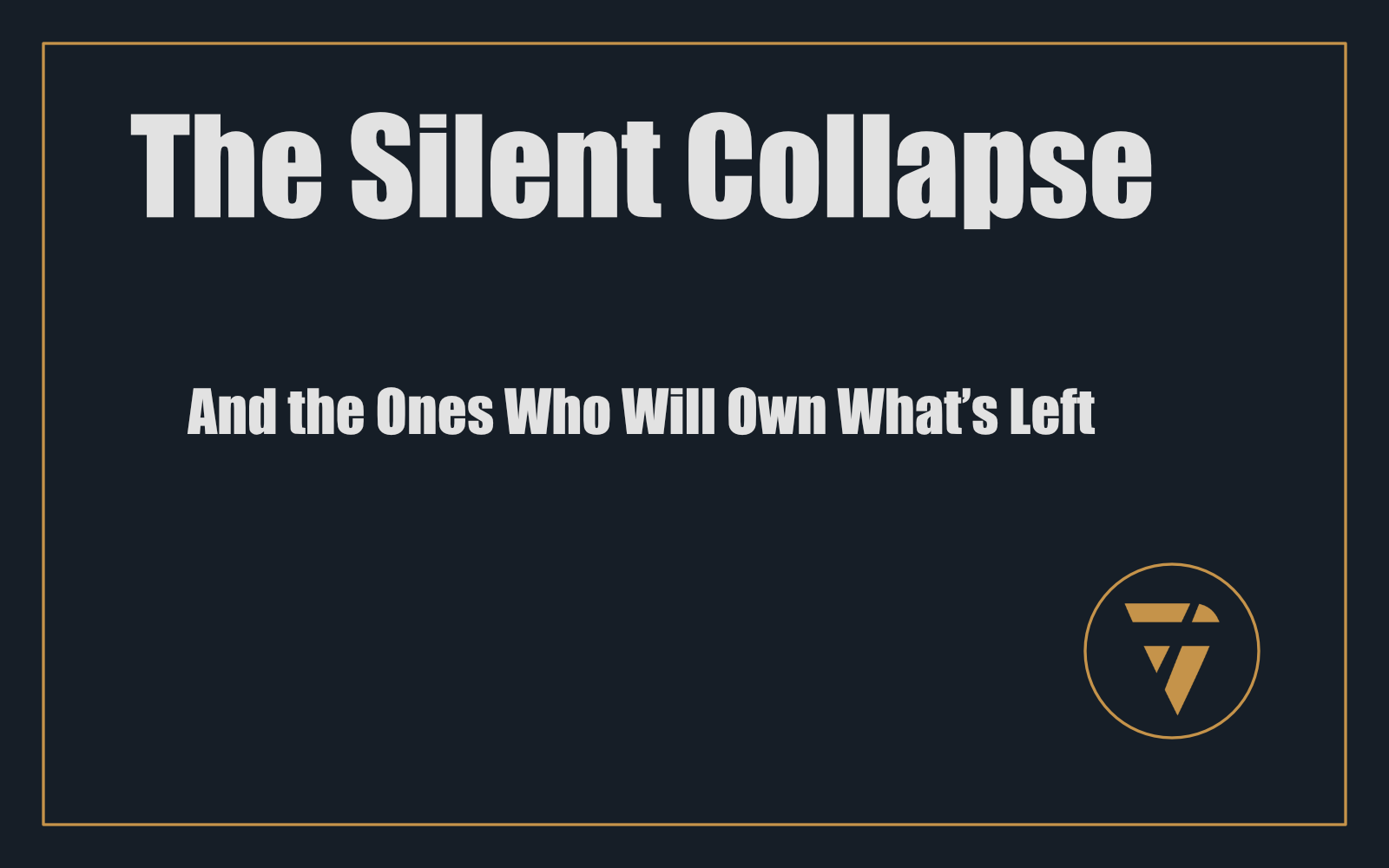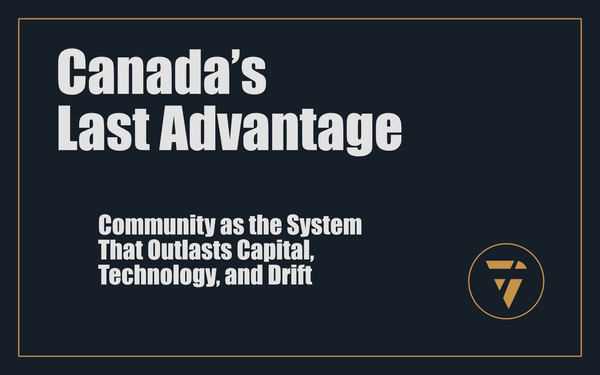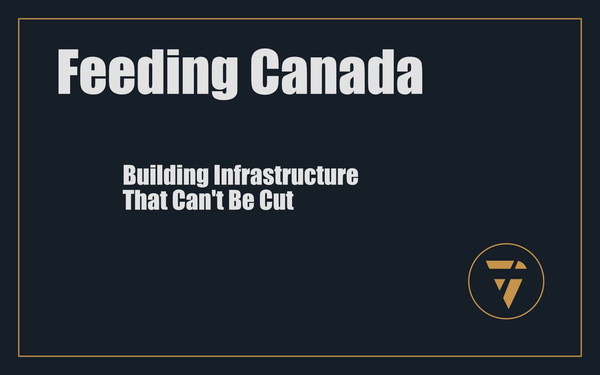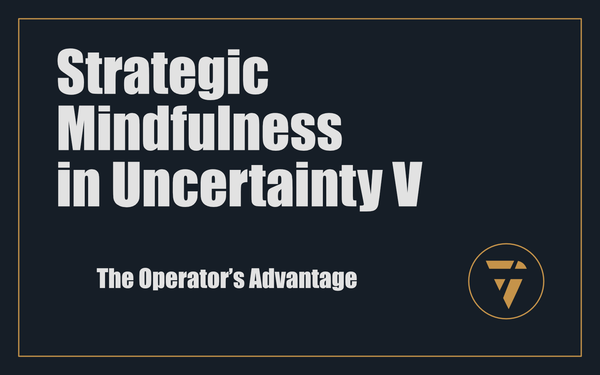The Silent Collapse

And the Ones Who Will Own What’s Left
Walk down any main street in North America and you’ll see it.
The faded signage over a 40-year-old business.
The owner’s name painted on the door.
The lights still on, the phone still ringing — but the energy is gone.
Inside, you’ll find a man or woman in their late sixties or seventies. Still at the counter. Still doing the books. Still answering calls. They’ve been at it for decades. The business pays their bills. It’s part of their identity.
But here’s what you won’t see unless you know where to look:
They’re tired.
They haven’t invested in growth in ten years.
They can’t find a manager who will stay.
Their kids don’t want it.
They don’t know what the business is worth — and they’re terrified of the day they can’t open the door.
This is not a niche. This is the backbone of our economy.
Plumbers. Printers. Machine shops. Transport companies. Agricultural processors. Electrical contractors. Every one of them with decades of customer relationships, stable cash flow, and assets that are often worth more than their asking price.
And they’re all on the clock.
Codie has this model figured out:

The Great Disintegration
The largest shift in wealth, property, and operational control in modern history is not happening on Wall Street.
It’s not the IPO pipeline. It’s not crypto.
It’s happening in quiet industrial parks, in strip malls, in warehouses, and on farmland.
Tens of thousands of privately owned businesses are sitting on the edge of a cliff because the owner held on twenty years too long.
No succession plan.
No trained buyer.
No one in the family willing to run it.
When they go, they don’t “sell.” They disintegrate.
Equipment gets auctioned. The name disappears. The customer base fragments into competitors’ hands.
It’s wealth destruction on a scale the public doesn’t notice — because these are not “hot” companies. They don’t trend. They don’t raise rounds. They don’t make headlines.
But they employ millions. They own prime real estate. They have supply contracts written decades ago that no one can replicate today.
This collapse is invisible until it’s irreversible.
Why the Opportunity Is Hiding in Plain Sight
To most people, these businesses are “boring.”
To the operators who know better, they’re printing presses.
Margins may not be explosive, but they’re stable.
Clients are sticky because the service is essential.
The infrastructure is already built.
The only missing piece is the will — and the ability — to run them.
Here’s the truth: the market isn’t short on capital. The market is short on operators. People who know how to walk into an existing operation, diagnose what’s broken, and install systems that pull it back to life without gutting its identity.
That’s why the competition for these deals is almost non-existent — until the brokers get involved. Once they do, the price goes up, the terms get messy, and the best assets are stripped out before you even see the packet.
So the real question is: How do you get to the seller before the “for sale” sign goes up?
The Two Economies of Acquisition
There are only two ways to play this game.
1. The Retail Buyer’s Economy
This is where almost everyone starts. You search online listings. You talk to business brokers. You sign NDAs to see redacted financials. You negotiate with sellers who are already defensive and have been told their business is worth more than it is.
Every hour you spend here, you’re competing against dozens of other buyers, many of whom will overpay just to get a deal.
2. The Control Economy
This is where you own the vantage point. You’re upstream of the deal flow. You see opportunities months — sometimes years — before they’re public. You have a direct relationship with the owner. They trust you because you’ve been in their orbit for years. You’re not “a buyer.” You’re the person who will keep their legacy alive.
The Control Economy is where the real operators live. It’s where terms are better, prices are fair, and the first right of refusal is yours.
Why Most Will Miss This Window
There’s a fatal flaw in how most entrepreneurs think about buying a business: they start with the business they want to own.
They’ll say:
“I want a marketing agency.”
“I want a manufacturing plant.”
“I want a chain of gyms.”
That’s the wrong question.
The right question is: “Where is control in this industry — and how do I own it?”
Control isn’t about the logo on the door. It’s about the position in the ecosystem. The vantage point that lets you see the health, intentions, and vulnerabilities of dozens of potential acquisitions — without ever being in a bidding war.
When you think this way, you stop chasing listings, and start buying leverage.
The Shift from Hunter to Architect
Most acquisition entrepreneurs operate like hunters. They chase, they aim, they take the shot.
The ones who will own this decade are architects.
They build structures that deliver opportunities to their desk without cold calls, without broker fees, and without competition.
They design a position where sellers call them first — because the trust is already there.
In this position, you’re not a stranger trying to buy a stranger’s business. You’re a known quantity. You’re the safe pair of hands.
Deals close faster. Terms are cleaner. You’re negotiating as a partner, not a bidder.
What Happens Next
Over the next 10 years, trillions of dollars in operational businesses will change hands — or vanish.
Most buyers will still be fighting each other in the retail market, paying premiums for deals that have been stripped down by the time they hit public view.
A small number will be sitting in the control seat, watching the deals roll in, picking only the ones they want, and shaping industries from the inside out.
Those people won’t be lucky. They won’t be “connected.”
They’ll have built or bought the vantage point that made it inevitable.
This is what I’m working on. Tell me what you think, I enjoy the conversation! Subscribe and follow the work in real time.
Thanks!
B

They think the opportunity is buying the business.
It’s not.
It’s owning the seat that sees every deal before it has a price tag.
PS -







